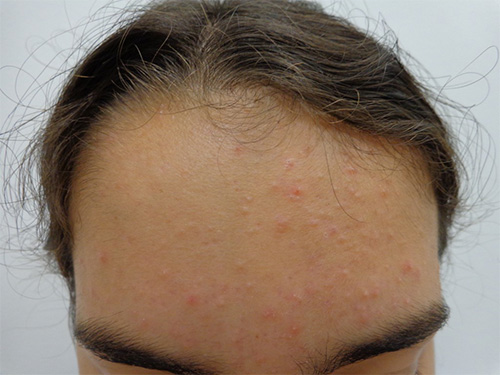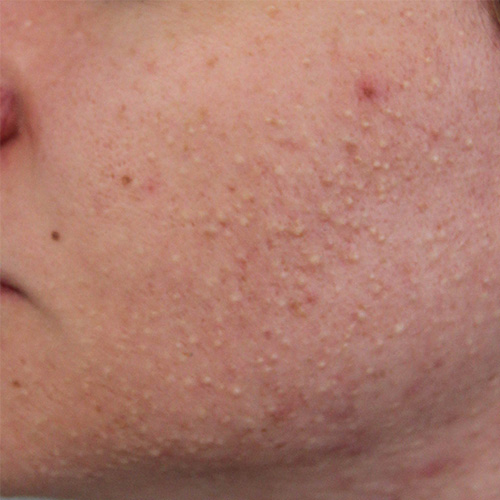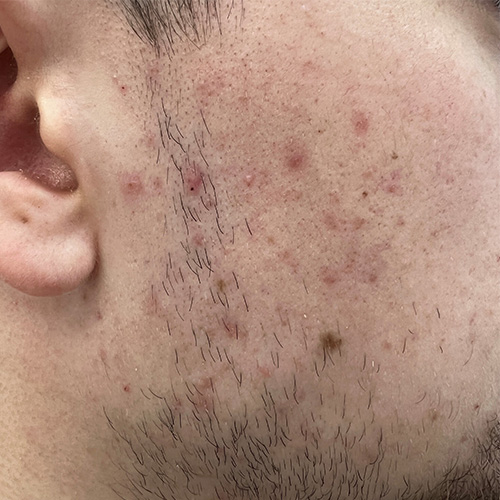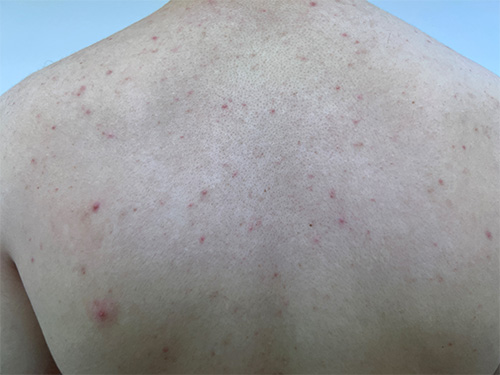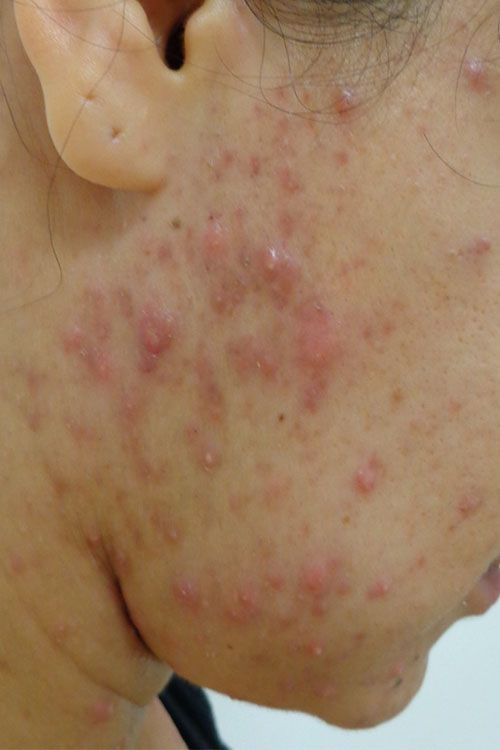Diagnosis and classification of acne
Acne lesions are classified as:
- noninflammatory—open (blackheads) and closed (whiteheads) comedones
- inflammatory—pustules, red papules, nodules and cysts
- resolving—macules or scars.
Comedones (open or closed), pustules and papules must be present for a diagnosis of acne. If the patient does not have comedones and only has pustules or papules, acne is unlikely.
Acne can be confused with other conditions, including:
- folliculitis caused by bacteria or Malassezia species—this is most commonly confused with acne
- keratosis pilaris affecting the cheeks—can be misdiagnosed as acne in infants and children
- milia (see here for a photo), miliaria and neonatal cephalic pustulosis—commonly misdiagnosed as infantile acne.
Acne can be sign of androgenisation. If females also present with hirsutism, obesity or menstrual irregularity, consider polycystic ovary syndrome.
The severity of acne can be loosely defined by the morphology, extent, and impact on quality of lifeZaenglein, 2016. Patients with:
- mild acne have a few comedones, pustules and papules, but no scarring—lesions are often confined to the forehead, nose and chin (the ‘T-section’ of the face)
- moderate acne have numerous comedones, pustules and papules, with some nodules but no scarring—lesions affect extensive areas of the face and sometimes the trunk
- severe acne have nodules, cysts and scarring—lesions may be confined to the face, but also commonly affect the trunk.
Impact on quality of life may categorise a patient into a higher severity category, even if the morphology and extent of their acne indicate lower severity.
Treatment options usually depend on severity of acne and the dominant type of acne presenting in the patient. For photo examples of comedonal acne, inflammatory papulopustular acne and early cystic acne, see here.
